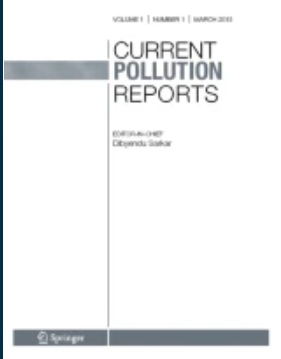新兴污染物的来源、国际立法措施及处理技术的影响因素综述
摘要
控制城市径流中新出现的污染物(CECs)的运输和去除确实是发达国家和发展中国家面临的重大挑战。由于大多数饮用水处理系统在去除这些污染物方面是无效的,因此解决这一问题需要多方面的方法,如来源识别、使用绿色基础设施的控制、先进的处理技术、公众意识和修订监管框架。为了实现这一目标,需要深入了解以前和正在进行的关于CECs类别的研究,以及包括基于自然的去除系统(NBS)在内的新时代可持续去除技术。本文旨在(1)识别和分类CECs的直接和间接来源;(2)评估现有立法措施的有效性;(3)各种CECs处理/去除技术并分析影响处理技术的因素;(4)突出挑战和进步;(5)为未来的研究和政策制定提出建议。本次审查的最终目的是促进制定更有效和可持续的战略来管理CECs,确保更好地保护环境和公众健康。最近的发现综述文章详细介绍了从环境中根除CECs的全球努力。这些努力包括根据特定国家的使用情况,制定需要清除的化学品的优先清单。例如,澳大利亚采用了一种名为ECHIDNA的工具,该工具有助于对可能破坏环境的有害化学物质进行优先排序和分类。在确定这些化学物质后,然后采用各种方法对水进行处理,有效地去除CECs。NBS可以被认为是一种可持续而有效的处理方案,用于从城市雨水水槽中去除CECs。人工湿地(CWs)被认为是水生环境中最有效的水处理和控制CECs的NBS之一。主要的去除过程包括吸附、光降解、微生物降解和植物修复。水文、基质、植被、Log (Kow)、CEC化合物的结构、要去除的化学物质的水极性、供电子基团的存在和天然有机物等因素都会影响这些去除机制。通过对各种方法去除水中各类CECs的比较研究表明,CWs的去除效果尤为显著,达到了令人印象深刻的88%。这种高效率,加上它们的低运行和维护成本,使它们成为发达地区和发展中地区水处理的一个有吸引力的选择。化粪池在减少污染方面非常有效,其成本效益与其去除污染物的能力直接相关。投资研究和开发专门用于从水中去除氯代烃的先进处理技术,对于确保环境和公众健康至关重要。尽管先进的氧化工艺、膜过滤和活性炭吸附等技术在去除各种污染物方面显示出良好的效果,但仍有各种各样的NBS正在研究中。CWs被认为是有前途的nbs,在去除CECs方面更有效和更具成本效益。CW可以降解CECs、农药、个人护理产品(PCP)、内分泌干扰物(EDC)、药物、多芳烃(PAHs)等有机化合物和消毒副产物(DBP)。化粪池利用涉及植物、土壤和相关微生物群落的自然过程来处理受污染的水,使其成为可持续和环保的选择。本文旨在整合全面的信息,以提高对当前全球对CECs的认识,并强调在CECs管理方面的挑战和进展,最终有助于开发更有效和可持续的治疗方案。Purpose of the Review
Controlling the transportation and removing contaminants of emerging concerns (CECs) from urban runoff is indeed a significant challenge for both developed and developing countries. Since most drinking water treatment systems are ineffective in removing these contaminants, addressing this issue requires a multi-faceted approach such as source identification, control using green infrastructure, advanced treatment technologies, public awareness and amending regulatory frameworks. Working towards that requires an in-depth understanding of the previous and ongoing research on categories of CECs, and new-age sustainable removal techniques that include nature-based removal systems (NBS). This paper aims to (1) identify and categorize the direct and indirect sources of CECs, (2) evaluate the effectiveness of existing legislative measures, (3) various CECs treatment/removal technologies and analyze the factors affecting treatment technologies, (4) highlight challenges and advancements and (5) propose recommendations for future research and policy development. Ultimately, this review aims to contribute to the development of more effective and sustainable strategies for managing CECs, ensuring better protection of environmental and public health.
Recent Findings
The reviewed articles detail global efforts to eradicate CECs from the environment. These efforts include creating priority lists of chemicals that need to be removed, tailored to their usage in specific countries. For instance, Australia employs a tool called ECHIDNA, which aids in prioritizing and categorizing harmful chemicals that could disrupt the environment. After identifying these chemicals, various methods are then employed to treat water and remove the CECs effectively. NBS can be considered a sustainable yet efficient treatment solution for the removal of CECs from the urban stormwater sink. Constructed wetlands (CWs) are considered to be one of the most effective NBS for water treatment and CECs control in the aquatic environment. Key removal processes involved are sorption, photodegradation, microbial biodegradation and phytoremediation. Factors such as hydrology, substrate, vegetation, Log (Kow), structure of the CEC compounds, water polarity of the chemicals to be removed, presence of electron-donating groups and natural organic matter influence these removal mechanisms. A comparative study of various methods for eliminating CECs of various categories from water demonstrates that CWs are particularly notable, achieving an impressive 88% removal efficiency. This high efficiency, combined with their low operational and maintenance costs, makes them an attractive option for water treatment, in both developed and developing regions. CWs are highly effective in reducing pollution, with their cost-effectiveness being directly linked to their pollutant removal capabilities.
Summary
Investing in the research and development of advanced treatment technologies specifically aimed at removing CECs from water is crucial for ensuring environmental and public health. Even though technologies such as advanced oxidation processes, membrane filtration and activated carbon adsorption show promising effectiveness in removing a wide range of contaminants, there are various NBS under study. CWs are considered promising NBSs that are more efficient and cost-effective in removing CECs. CW can degrade CECs, a combination of pesticides, personal care products (PCP), endocrine disruptor chemicals (EDC), pharmaceuticals, organic compounds such as polyaromatic hydrocarbons (PAHs) and disinfection by-products (DBP). CWs utilize natural processes involving plants, soil and associated microbial communities to treat contaminated water, making them a sustainable and eco-friendly option. This review paper aims to consolidate comprehensive information to enhance understanding of the current global perspective on CECs and highlights the challenges and advancements in managing CECs, ultimately contributing to the development of more effective and sustainable treatment solutions.

 求助内容:
求助内容: 应助结果提醒方式:
应助结果提醒方式:


